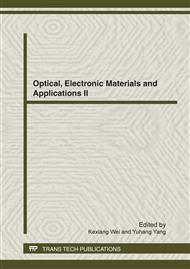p.236
p.240
p.246
p.252
p.257
p.264
p.271
p.276
p.281
Analysis of Acoustic Performance of Compound Muffler by Finite Element Method
Abstract:
Since the theory of one-dimensional plane wave can not accurately predict the internal sound field of the complex structure muffler. The three-dimensional finite element method is adopted to establish the acoustic model of the composite muffler based on the application of composite muffler model. Transmission loss and characteristics of internal sound field of the composite muffler's are calculated through acoustic vibration software Sysnoise. The calculation shows that the muffler under the interference of fluid flow has the higher transmission loss compared with the absence of liquidity function with an additional silencer band. The analysis method and conclusions provide a basis for the design of composite muffler.
Info:
Periodical:
Pages:
257-263
Citation:
Online since:
June 2012
Authors:
Price:
Сopyright:
© 2012 Trans Tech Publications Ltd. All Rights Reserved
Share:
Citation:


